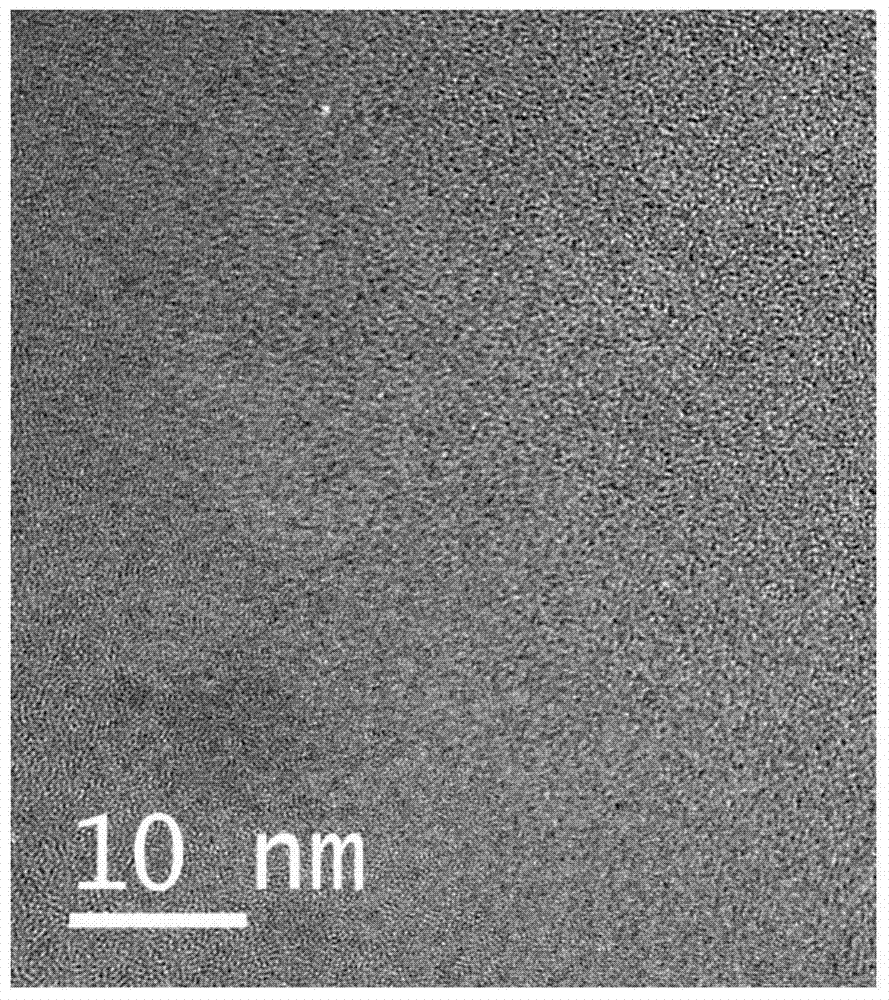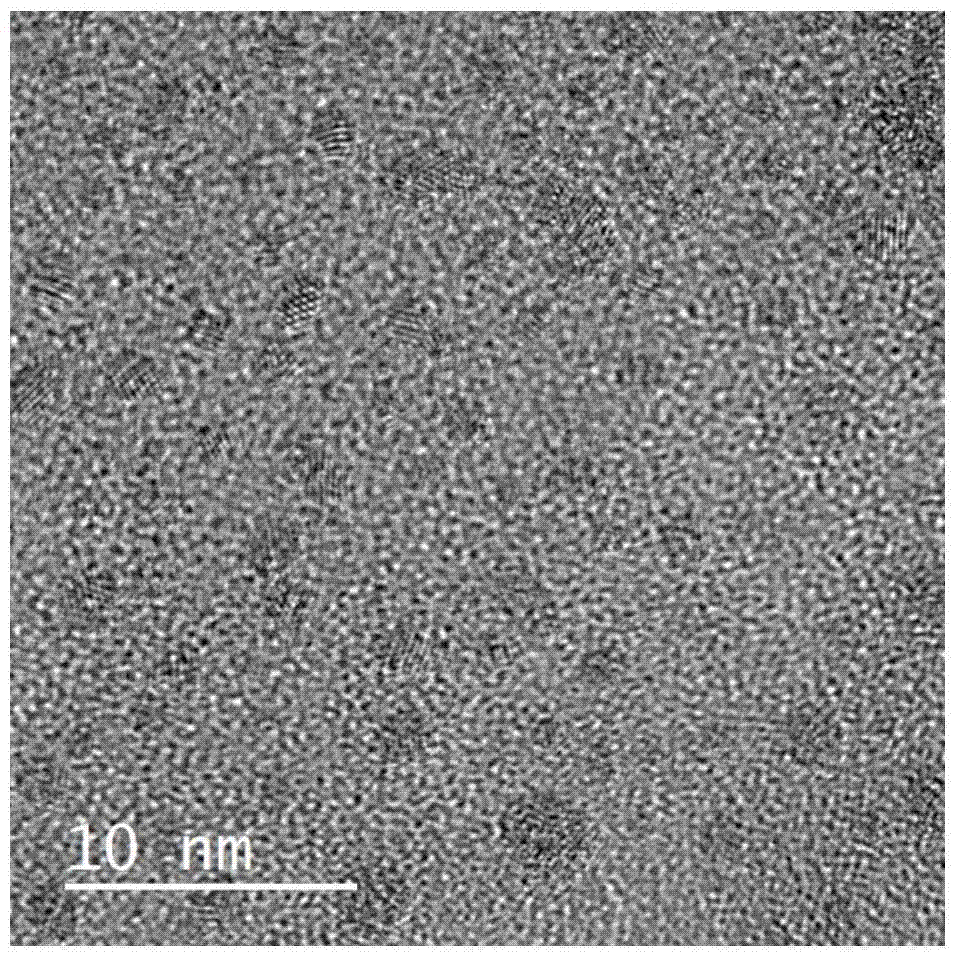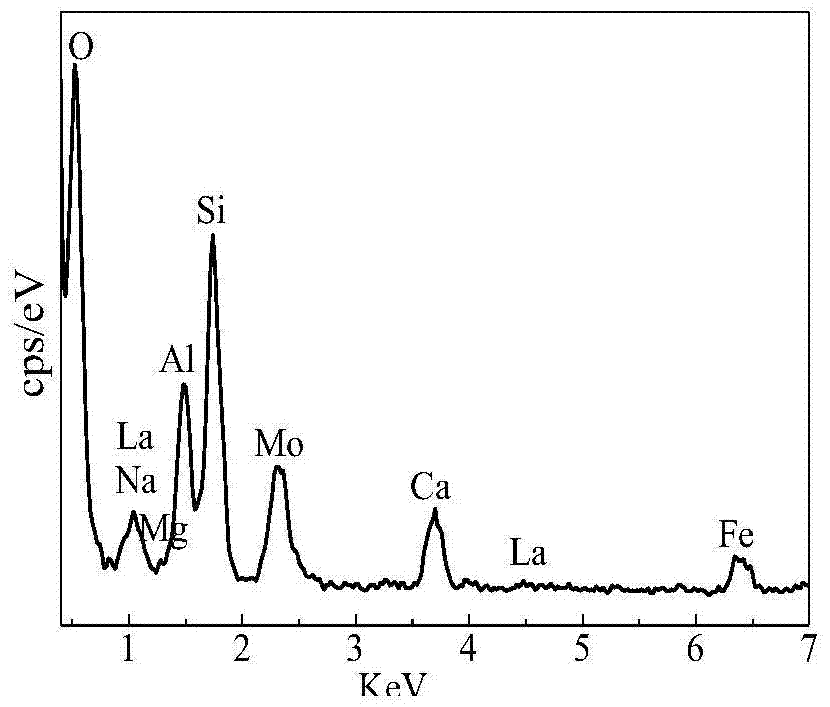Glass-ceramic with nanocrystal clusters distributed in glass phase and method for preparing same
A technology of glass-ceramic and nano-crystal, which is applied in the field of glass-ceramic and its preparation, can solve the problems of weakening glass phase performance, comprehensive utilization rate of less than 10%, and decline of glass-ceramic material performance, and achieve the effect of improving mechanical properties
- Summary
- Abstract
- Description
- Claims
- Application Information
AI Technical Summary
Problems solved by technology
Method used
Image
Examples
Embodiment 1
[0035] A method for preparing glass-ceramics distributed with nanocrystal clusters in a glass phase:
[0036] (1) According to the weight ratio of the chemical composition of the glass-ceramics: 50% SiO 2 , 20% CaO, 5.04% Al 2 o 3 , 7.73% MgO, 0.55% Na 2 O, 2% B 2 o 3 , 3%CaF 2 , 3.43% Fe 2 o 3 , 0.25%Cr 2 o 3 and 8% La 2 o 3 , the weight ratio of raw materials: 50% Baiyun Obo tailings, 15% fly ash, 15% SiO 2 , 6.75% CaO, 2% borax, 3% CaF 2 , 0.25%Cr 2 o 3 and 8% La2 o 3 ;
[0037] (2) Mixing: Put the raw materials with a good ratio into the ball mill for 60 minutes and grind to below 40 mesh;
[0038] (3) Melting: Put the uniformly mixed raw materials into the crucible, and use a high-temperature resistance furnace to melt, clarify and homogenize at 1400-1500°C;
[0039] (4) Forming and annealing: casting the melted and clarified glass solution on a stainless steel mold to form a basic glass sample, annealing the basic glass sample at 600°C for 4 hours and c...
Embodiment 2
[0044] A method for preparing glass-ceramics distributed with nanocrystal clusters in a glass phase:
[0045] (1) Weight ratio of raw materials: 50% Baiyun Obo tailings, 15% fly ash, 22% SiO 2 , 7.05% CaO, 2% borax, 3% CaF 2 , 0.25%Cr 2 o 3 and 0.7% La 2 o 3 +CeO 2 ;
[0046] (2) Mixing: Put the raw materials with a good ratio into the ball mill for 60 minutes and grind to below 40 mesh;
[0047] (3) Melting: Put the uniformly mixed raw materials into the crucible, and use a high-temperature resistance furnace to melt, clarify and homogenize at 1400-1500°C;
[0048] (4) Forming and annealing: casting the melted and clarified glass solution on a stainless steel mold to form a basic glass sample, annealing the basic glass sample at 600°C for 4 hours and cooling with the furnace to eliminate the stress in the sample;
[0049] (5) Heat treatment: Nucleate the basic glass sample after annealing at 680°C for 2 hours and crystallize it at 860°C for 2 hours to prepare a glass-...
PUM
| Property | Measurement | Unit |
|---|---|---|
| size | aaaaa | aaaaa |
| flexural strength | aaaaa | aaaaa |
Abstract
Description
Claims
Application Information
 Login to View More
Login to View More - R&D
- Intellectual Property
- Life Sciences
- Materials
- Tech Scout
- Unparalleled Data Quality
- Higher Quality Content
- 60% Fewer Hallucinations
Browse by: Latest US Patents, China's latest patents, Technical Efficacy Thesaurus, Application Domain, Technology Topic, Popular Technical Reports.
© 2025 PatSnap. All rights reserved.Legal|Privacy policy|Modern Slavery Act Transparency Statement|Sitemap|About US| Contact US: help@patsnap.com



